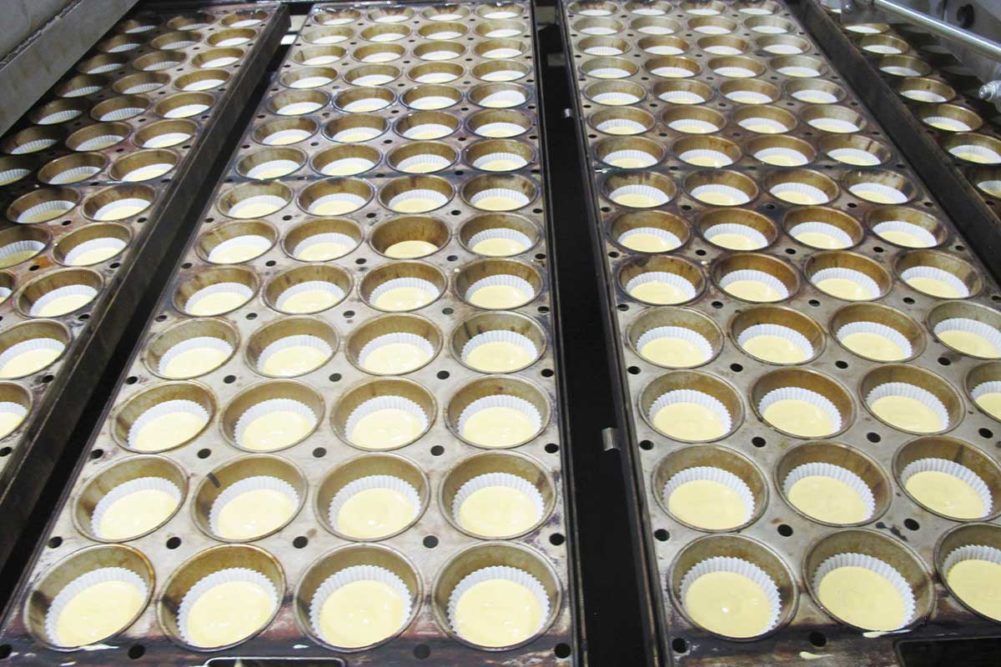Throughout his career in bakery operations, Jeremiah Tilghman, now chief operations officer of Better Butter, Salt Lake City, has been a proponent of standardization.
“Make sure that your processes are well-documented,” said Mr. Tilghman, who’s worked at small and large bakeries over the past two decades. “Find out where your bottlenecks are, and then make sure your line rate is maxed out to that bottleneck.”
When it comes to operating efficiency, he gauges performance.
“Are you running the line at the designed standard?” he asked. “In a bakery, I always measure OEE (overall equipment effectiveness) at the divider. If that divider can run 100 cuts a minute, you’re monitoring that you’re running it 100 cuts a minute, assuming the rest of your line can handle 100 units per minute.”
After setting that standard on the front end of a line, bakeries need to benchmark how many units are divided compared to the number of good-quality finished units wrapped.
“OEE is the multiplier of ‘quality,’ or good units produced and compared to your divider counts, times ‘performance,’ which is the actual divider rate or designed rate, times ‘availability’ or uptime,” he said. “I’ve used that calculation both in the bakery and in the butter business.”
Tilghman noted that quality is often ignored in determining a plant’s performance.
“If quality numbers are terrible — you are maybe running at designed rate with no downtime. However, if you have burnt bread or light bread, then you’re just throwing it all in the trash,” he pointed out. “You have to look at all three elements of your business and see what needs the most attention. If you’re running faster and just throwing products in the trash can, that doesn’t do any good. Additionally, your food safety programs must be solid as well. All it takes is one or two recalls, and it could destroy your brand.”
Moreover, he noted a poor safety record can result in visits by the Occupational Safety & Health Administration and set a culture that drives a business down.
“I view operations as a three-legged stool that includes people, quality and costs,” Tilghman observed. “In order to be a stable operation, all three legs of the stool must be solid. All three legs must be measured and must stand strong. People are about development, culture, food safety and people safety. Are the products that you are selling of great quality? Costs are about making your numbers to ensure you are making the bottom line of the business to be successful. When I assess the business, I look at which one of those legs of the business is suffering the most and fix it.”
Jeff Dearduff, president, JED Manufacturing Services and veteran bakery engineer, quantifies a bakery’s performance by calculating efficiency, downtime and yield.
To improve performance, bakeries need to target those areas that are creating the biggest inefficiencies in a line.
“I may be old school, but what I learned 40 years ago still works today,” he said. “Measure your machine efficiency as to how long it should have taken to produce and then how long it actually took to make those products. That delivers a downtime factor that can be broken down to the key factors that added up to the bad number.”
At the mixing stage, Dearduff stressed, every batch of dough should have a value that determines how many products should be produced. Comparing the ideal number of products produced to what is packaged should help bakers identify those gaps in production that can be targeted for improvement.
“When you break it down in this manner, different skill sets can work on the different elements, and together, they can bring the performance back into the target ranges,” he said. “From there, the finance people can measure labor efficiency, overhead cost effects and material variances to measuring EDY, or efficiency, downtime and yield.”
Jim Kline, president, The EnSol Group, recommended calculating efficiency in a way that’s compatible with a bakery’s operation.
“If you have a tool that your bakery is comfortable with, stay with it,” he said. “Develop your dashboard for the way you want it to be.”
This article is an excerpt from the December 2023 issue of Baking & Snack. To read the entire feature on Operational Efficiency, click here.






